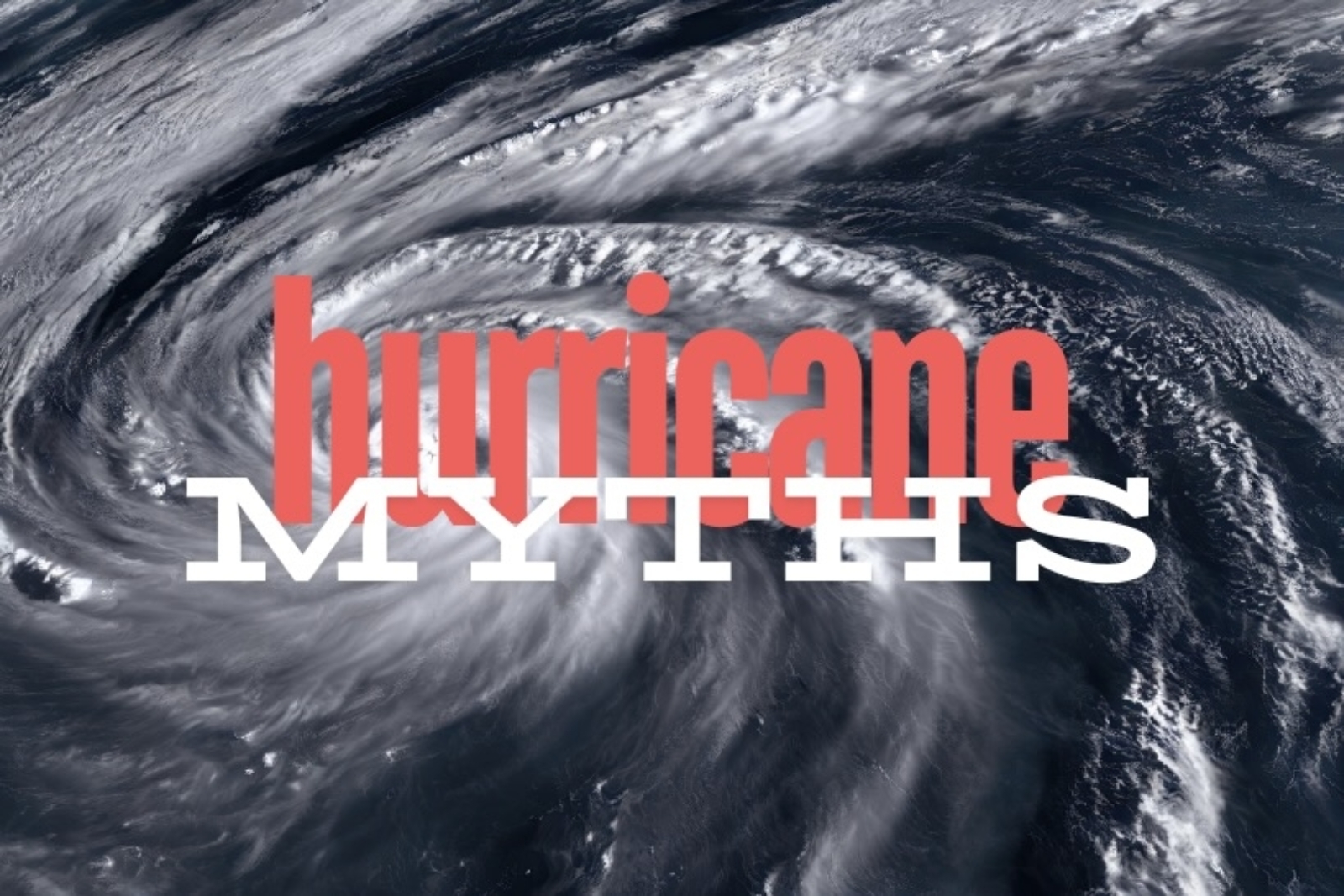Hurricane Myths and Misconceptions

Hurricanes, with their ferocious winds and torrential rains, are among the most powerful and destructive natural disasters on Earth. Yet, despite the wealth of information available, myths and misconceptions about hurricanes persist. In this blog, we'll unravel some of the most common hurricane myths, separating fact from fiction, and shedding light on the truth behind these formidable storms.
Myth 1: Opening Windows During a Hurricane Will Equalize Pressure and Reduce Damage
One prevalent myth is the belief that opening windows in your home during a hurricane will equalize the pressure and minimize damage. However, this advice is not only incorrect but potentially dangerous.
Hurricanes are characterized by extremely low pressure at their centers, which can cause buildings to explode outward as the storm passes. Opening windows only serves to allow the high winds to enter your home, increasing the risk of structural damage and injury to occupants. Instead of opening windows, the best course of action is to seek shelter in a sturdy, interior room on the lowest level of your home, away from windows and exterior walls.
Myth 2: Taping Windows Will Prevent Them from Shattering
Another common misconception is that taping windows with duct tape or masking tape will prevent them from shattering during a hurricane. While this practice may seem logical, it is largely ineffective at protecting windows from the high winds and flying debris associated with hurricanes.
Taping windows does little to reinforce them and may create a false sense of security. In fact, the adhesive from the tape can make it more difficult to clean up broken glass after the storm has passed. Instead of relying on tape, consider installing storm shutters or impact-resistant windows to provide genuine protection against hurricane-force winds.
Myth 3: Hurricanes Only Impact Coastal Areas
There's a widespread belief that hurricanes only affect coastal regions, leading to a false sense of security among inland residents. While it's true that coastal areas are particularly vulnerable to hurricane damage, including storm surge and coastal flooding, inland regions can also experience significant impacts from these storms, such as strong winds, heavy rainfall, and inland flooding.
Hurricanes can produce strong winds, heavy rainfall, and tornadoes that extend far inland from the coast. In fact, some of the most devastating impacts from hurricanes occur in inland communities, where flooding, wind damage, and power outages can cause widespread disruption and destruction. It's important for residents in all areas, not just coastal regions, to be prepared for the potential impacts of hurricanes.
Myth 4: Hurricanes Only Occur During Hurricane Season
Many people associate hurricane season with the summer and early fall months, particularly in regions prone to tropical cyclone activity. While it's true that hurricane activity tends to peak during these months, hurricanes can occur at any time of year in certain parts of the world.
In the Atlantic Basin, hurricane season officially runs from June 1st to November 30th. However, hurricanes have been known to form outside of this timeframe, particularly in the early and late parts of the season. In other regions, such as the Pacific, typhoon season can extend year-round. It's important for residents in hurricane-prone areas to remain vigilant and prepared for storms throughout the year, regardless of the official hurricane season dates.
Myth 5: Hurricanes Are Always Predictable
While advances in meteorology have improved our ability to predict hurricanes with greater accuracy, there is still a common misconception that hurricanes are always predictable days in advance. In reality, hurricane forecasting is complex and subject to numerous uncertainties, particularly when it comes to predicting the exact track and intensity of a storm.
While meteorologists can provide forecasts and warnings based on the best available data, there is always a margin of error associated with hurricane forecasts. Storms can change direction, intensity, and speed with little warning, making it essential for residents in hurricane-prone areas to stay informed and prepared, even if a storm's path appears to be well-defined.
Why Choose NDS for Hurricane Restoration:
Hurricanes are forces of nature that demand respect and preparation from those in their path. By dispelling common myths and misconceptions about hurricanes, we can better understand the risks and take appropriate steps to protect ourselves and our communities.
From seeking proper shelter to heeding evacuation orders, knowledge is our greatest defense against the destructive power of hurricanes. By arming ourselves with facts and staying informed, we can weather the storm and emerge stronger on the other side. So let's clear the air, debunk the myths, and face hurricane season with confidence and resilience.
At National Disaster Solutions (NDS), we specialize in getting your business back on track swiftly and effectively. Through our NDS Prime Program, we offer proactive solutions designed to ensure successful recovery in the face of emergencies and natural disasters. Recognizing that downtime translates to lost revenue and customers, we provide a comprehensive approach to address these unforeseen challenges.
From emergency planning and mitigation to reconstruction, our NDS Prime Program covers all aspects of disaster recovery. Backed by a priority emergency response service, you can trust that we'll be there when you need us most. With NDS Prime, your business gains peace of mind, knowing that expert support is readily available to facilitate a swift return to normal operations in the event of property damage or loss.
Don't wait until disaster strikes. Contact us today for immediate assistance and let us help safeguard the continuity of your business. We're here for you every step of the way.

